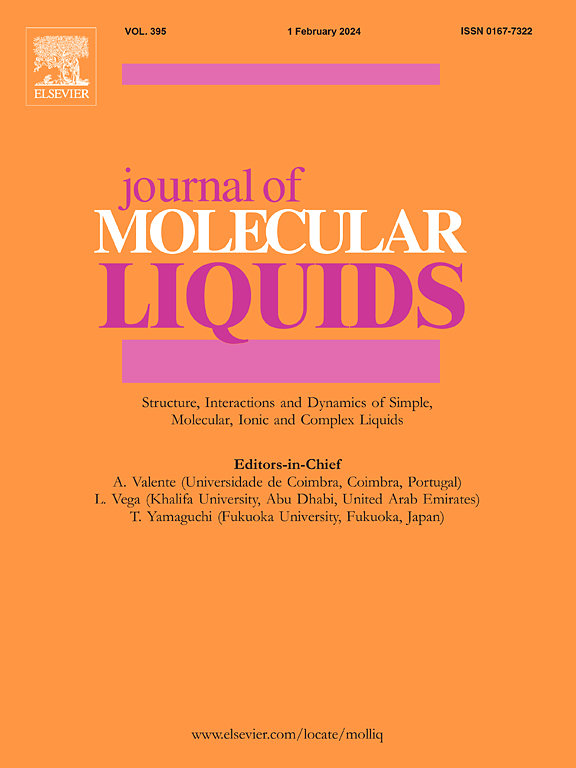利用硅烷偶联剂增强 CFRP/混凝土界面的耐水性和稳定性:纳米级研究的启示
IF 5.3
2区 化学
Q2 CHEMISTRY, PHYSICAL
引用次数: 0
摘要
本文章由计算机程序翻译,如有差异,请以英文原文为准。

Enhancing water resistance and stability of CFRP/concrete interfaces with silane coupling agents: Insights from nanoscale investigations
The durability and performance of CFRP/concrete structures are critically dependent on the integrity of the epoxy/concrete interface in hydrothermal environments. However, the degradation mechanisms of these interfaces under varying temperature conditions remain underexplored. This study explores the water resistance and stability of epoxy/concrete interfaces under hydrothermal conditions using molecular simulations. The research focuses on how temperature impacts molecular diffusion, hydrogen bonding, and the integrity of the composite interface. Findings reveal that higher temperatures increase the molecular kinetic energy, leading to greater water molecule infiltration and degradation of the interface. Modification with γ-amino-propyltriethoxysilane (SCA) improves adhesion and stability, especially at extreme temperatures, demonstrating the protective effect of SCAs on the C-S-H gel. The study divided the wetting process into three stages: initial adsorption, mixing, and sustained dissociation/stability. At 253 K, the SCA-modified epoxy maintained a stable attachment to the C-S-H substrate, while at 313 K, the modified resin showed enhanced adhesion, increasing the adhesion rate from 17 % to 60 %. The research highlights the protective effect of silane coupling agents on the C-S-H gel, promoting better bonding and reducing atomic diffusion on the surface. The findings provide a theoretical basis for enhancing the durability of CFRP/concrete structures in the hydrothermal environment.
求助全文
通过发布文献求助,成功后即可免费获取论文全文。
去求助
来源期刊

Journal of Molecular Liquids
化学-物理:原子、分子和化学物理
CiteScore
10.30
自引率
16.70%
发文量
2597
审稿时长
78 days
期刊介绍:
The journal includes papers in the following areas:
– Simple organic liquids and mixtures
– Ionic liquids
– Surfactant solutions (including micelles and vesicles) and liquid interfaces
– Colloidal solutions and nanoparticles
– Thermotropic and lyotropic liquid crystals
– Ferrofluids
– Water, aqueous solutions and other hydrogen-bonded liquids
– Lubricants, polymer solutions and melts
– Molten metals and salts
– Phase transitions and critical phenomena in liquids and confined fluids
– Self assembly in complex liquids.– Biomolecules in solution
The emphasis is on the molecular (or microscopic) understanding of particular liquids or liquid systems, especially concerning structure, dynamics and intermolecular forces. The experimental techniques used may include:
– Conventional spectroscopy (mid-IR and far-IR, Raman, NMR, etc.)
– Non-linear optics and time resolved spectroscopy (psec, fsec, asec, ISRS, etc.)
– Light scattering (Rayleigh, Brillouin, PCS, etc.)
– Dielectric relaxation
– X-ray and neutron scattering and diffraction.
Experimental studies, computer simulations (MD or MC) and analytical theory will be considered for publication; papers just reporting experimental results that do not contribute to the understanding of the fundamentals of molecular and ionic liquids will not be accepted. Only papers of a non-routine nature and advancing the field will be considered for publication.
 求助内容:
求助内容: 应助结果提醒方式:
应助结果提醒方式:


